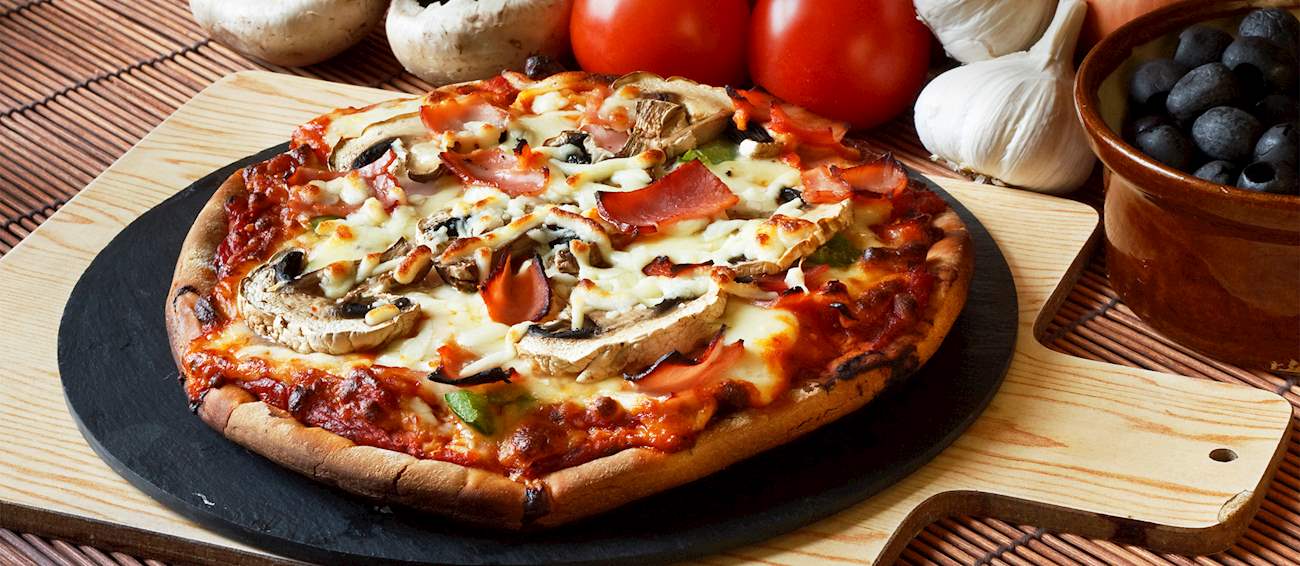Pizza is more than just a beloved dish—it’s a global phenomenon with deep historical roots. From the wood-fired ovens of Naples to the thick, cheesy layers of Chicago deep-dish, pizza comes in many forms. But traditional, authentic pizzas hold a special place in the culinary world. In this article, we explore the origins, regional varieties, ingredients, and techniques that define traditional pizzas from different cultures.
The Origins of Pizza
Pizza, as we know it today, originated in Naples, Italy, in the 18th century. The earliest forms of pizza were simple flatbreads topped with minimal ingredients, often eaten by the working class. With the introduction of tomatoes from the Americas, Neapolitans began adding tomato sauce, leading to the creation of modern pizza.
One of the most famous early pizzas is the Margherita Pizza, which was made in honor of Queen Margherita of Savoy in 1889. It featured the colors of the Italian flag: red tomatoes, white mozzarella, and green basil.
Authentic Regional Pizzas
Different regions around the world have their own interpretations of pizza, each with unique ingredients, preparation methods, and cultural significance.
1. Neapolitan Pizza (Italy)
Neapolitan pizza is considered the gold standard of traditional pizza. The Associazione Verace Pizza Napoletana (AVPN) has strict guidelines for what constitutes a true Neapolitan pizza:
- Made with 00 flour, fresh yeast, water, and salt.
- Topped with San Marzano tomatoes and Mozzarella di Bufala Campana.
- Cooked in a wood-fired oven at 900°F (485°C) for 60-90 seconds.
- Has a soft, slightly charred crust with a tender center.
There are two primary types:
- Pizza Margherita (tomato, mozzarella, basil, olive oil)
- Pizza Marinara (tomato, garlic, oregano, olive oil)
2. Sicilian Pizza (Italy)
Sicilian pizza, or “Sfincione,” is different from its Neapolitan cousin:
- Thick, rectangular, and spongy crust.
- Topped with a rich tomato sauce, onions, anchovies, and breadcrumbs.
- Uses local cheeses instead of mozzarella, such as Caciocavallo.
3. Roman Pizza (Italy)
Rome has two major styles of pizza:
- Pizza al Taglio (by the slice): Baked in large rectangular trays and cut into squares.
- Pizza Tonda Romana: Thin and crispy, with minimal toppings.
4. New York-Style Pizza (USA)
Developed by Italian immigrants, this pizza is characterized by:
- A large, thin, and foldable crust.
- Cooked in a gas oven instead of wood-fired.
- Uses low-moisture mozzarella.
- Sold by the slice or as whole pies.
5. Chicago Deep-Dish Pizza (USA)
A deviation from traditional Italian styles, this pizza features:
- A thick, buttery crust baked in a deep pan.
- Layers of cheese, meats, and chunky tomato sauce.
- A long baking time (30-40 minutes).
6. Detroit-Style Pizza (USA)
Detroit-style pizza is a rectangular, thick-crust pizza baked in a steel pan, giving it a crispy edge. It features Wisconsin brick cheese and a distinct “sauce on top” layering technique.
7. Argentinian Fugazza (Argentina)
Argentina, home to a large Italian diaspora, developed its own pizza variation:
- Fugazza is a focaccia-like pizza with caramelized onions and oregano.
- Fugazzeta includes cheese stuffing.
8. Turkish Pide (Turkey)
Pide, often called “Turkish pizza,” is an elongated, boat-shaped flatbread topped with cheese, meats, and vegetables.
Ingredients that Define Authentic Pizza
The key to an authentic pizza is high-quality, traditional ingredients. Here are some essential components:
- Flour: Neapolitan pizzas use 00 flour, while American styles often use high-gluten flour for chewiness.
- Tomatoes: San Marzano tomatoes are the gold standard for Italian pizzas.
- Cheese: Fresh mozzarella (Fior di Latte or Buffalo Mozzarella) is crucial for Neapolitan pizza, while other regions use variations like provolone, parmesan, or cheddar.
- Olive Oil: Extra virgin olive oil enhances flavor and texture.
- Yeast: Natural fermentation or fresh yeast is commonly used.
Traditional Pizza-Making Techniques
Authentic pizza is defined not only by its ingredients but also by its preparation:
- Dough Fermentation: Long fermentation (12-48 hours) improves texture and digestibility.
- Hand Stretching: Neapolitan pizzas are never rolled but stretched by hand.
- High-Temperature Baking: Traditional wood-fired ovens reach extreme temperatures, creating a unique crust texture.
- Minimalist Toppings: Less is more—traditional pizzas rely on a few high-quality ingredients rather than excessive toppings.
The Cultural Significance of Traditional Pizzas
Pizza is not just food; it represents history, migration, and cultural identity. For Italians, Neapolitan pizza is a UNESCO-recognized cultural heritage. In the U.S., pizza has evolved into a symbol of urban food culture. In Argentina, it reflects the blend of Italian and South American flavors.
Conclusion
Authentic traditional pizzas offer a fascinating glimpse into the world’s culinary heritage. Whether it’s a thin, wood-fired Neapolitan pizza, a thick and hearty Sicilian slice, or an American adaptation, pizza continues to evolve while staying true to its roots. By understanding its history, regional variations, and key ingredients, we can appreciate and savor the authentic flavors that make pizza a timeless favorite worldwide.

